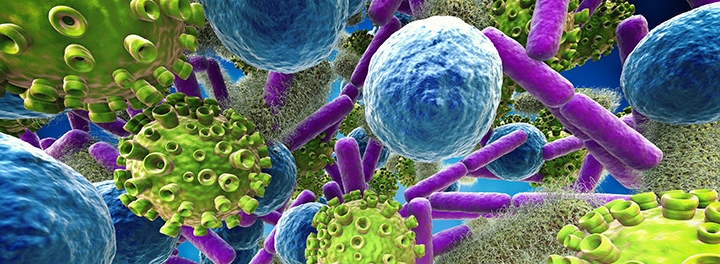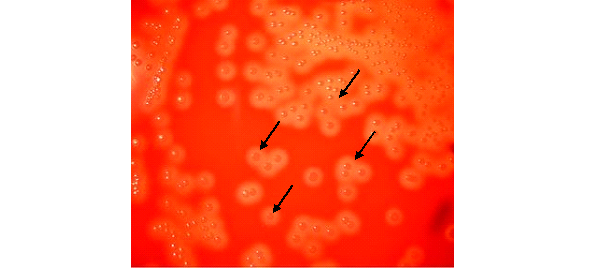The human body is inundated with plethora of harmless microorganism’s including fungi and bacteria found in different parts of the body. These organisms which are generally known as normal microflora are found in both the external and internal part of the body. The relationship between indigenous microorganisms of humans (i.e. normal microflora) and the human body or host itself is a typical example of a host-parasite relationship or host-microbe association that is usually beneficial to both the host and the microbe in the relationship. It is noteworthy that some host-parasite relationships such as parasitism and predation are not beneficial to the host; and in such associations, the parasite usually derive benefit from its host even to the extent of killing the host.
There is usually a state of equilibrium maintained between the host and the microbe; and this balance ensures that the host and the normal microflora coexist together and survive mutually without causing harm or injury to each other. This state of balance between the host and the normal microflora is normally experienced when the human host in particular is in a healthy state. A functional immune system aside other physiological or physical barrier of the body such as an intact skin helps the host to maintain a state of equilibrium that allow both the normal microflora and the host to coexist without the development of an infectious disease.
Disease or infection usually develops when this state of balance or equilibrium in the body is disrupted either by disease development or dilapidated immune system. The development of disease or infection in this case could be caused by endogenous microorganisms – which are microbes innately found in the host such as normal microfloraor from exogenous microorganisms – that emanate from the environment or from other infected humans, animals or fomites. Fomites are inanimate or non-living objects that can help to transmit infectious disease agents or infections from one person to another and from one location to another.They includewater, tables, clothes, chairs and food that help to transmit infectious agents and/or diseases to susceptible human or animal hosts in a given area.
Normal microflora which can also be referred to as flora or normal microbiota is the totality of microorganisms that are inherently present in a particular environment, body or location at every specific point of time. They generally refer to harmless microorganisms that are frequently found in particular anatomical sites of a healthy host including humans and animals. And it is worthy of note that the terms normal microflora, microflora, indigenous flora, normal commensal flora and normal microbiota are used synonymously to mean the same thing. Normal microflora can also be called indigenous microbial population, microflora, normal microbial flora or microbial flora. They are the group of beneficial microorganisms which are normally associated with a particular part, structure or tissue of the human or animal body; and they contribute immensely to the general good health of humans under optimum body conditions. They can include bacteria, fungi or protozoa; and these microscopic organisms can either be resident or transient in nature.
Bacteria are the group of microorganisms that make up most of the microflora of the human body. Fungi and protozoa are barely present as microflora. Resident microflora (autochthonous flora) are those microorganisms which are permanent dwellers or natural inhabitants of a particular environment or body at any given point of time while transient microflora(allochthonous flora) are microorganisms which only have a temporary habitation in an environment or body at any given time. Microorganisms become transient when they move from one part of the body or their natural environment to another. The microorganisms that naturally make up the microbiota of the human body are normally harmless and they pose no potent danger to the health of the individual. These harmless microorganisms play a variety of important role in the entire upkeep and protection of the human body from disease-causing microorganisms (pathogens), and many floras in the digestive system of humans also aid digestion and other internal metabolic activities by secreting substances or enzymes that spur or fasten these processes.
References
Black, J.G. (2008). Microbiology: Principles and Explorations (7th ed.). Hoboken, NJ: J. Wiley & Sons.
Brooks G.F., Butel J.S and Morse S.A (2004). Medical Microbiology, 23rd edition. McGraw Hill Publishers. USA.
Champoux J.J, Neidhardt F.C, Drew W.L and Plorde J.J (2004). Sherris Medical Microbiology: An Introduction to Infectious Diseases. 4th edition. McGraw Hill Companies Inc, USA.
Dictionary of Microbiology and Molecular Biology, 3rd Edition. Paul Singleton and Diana Sainsbury. 2006, John Wiley & Sons Ltd. Canada.
Engleberg N.C, DiRita V and Dermody T.S (2007). Schaechter’s Mechanisms of Microbial Disease. 4th ed. Lippincott Williams & Wilkins, Philadelphia, USA.
Gladwin M and Trattler B (2006). Clinical Microbiology Made Ridiculously Simple. 3rd edition. MedMaster, Inc., Miami, USA.
Levinson W (2010). Review of Medical Microbiology and Immunology. Twelfth edition. The McGraw-Hill Companies, USA.
Madigan M.T., Martinko J.M., Dunlap P.V and Clark D.P (2009). Brock Biology of Microorganisms, 12th edition. Pearson Benjamin Cummings Inc, USA. Pp. 902-903.
Mahon C. R, Lehman D.C and Manuselis G (2011). Textbook of Diagnostic Microbiology. Fourth edition. Saunders Publishers, USA.
Mandell G.L, Bennett J.E, Dolin R, eds. Mandell, Douglas, and Bennett’s Principles and Practice of Infectious Diseases, 5th ed. Philadelphia: Churchill Livingstone, 2002.
Murray P.R, Baron E.J, Jorgensen J.H., Pfaller M.A and Yolken R.H (2003). Manual of Clinical Microbiology. 8th edition. Volume 2. American Society of Microbiology (ASM) Press, Washington, D.C, U.S.A.
Murray P.R., Rosenthal K.S., Kobayashi G.S., Pfaller M. A. (2002). MedicalMicrobiology. 4th edition. Mosby Publishers, Chile.
Discover more from Microbiology Class
Subscribe to get the latest posts sent to your email.





